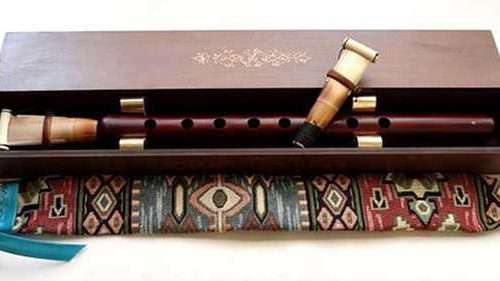
Trumpet as a solo and group instrument
 Trumpet as a solo and group instrument
Trumpet as a solo and group instrument
The trumpet is one of the brass instruments. It has an extremely expressive, loud sound that can be used in almost every musical genre. He feels at home both in large symphonic and wind orchestras, as well as jazz big bands or small chamber ensembles playing both classical and popular music. It can be used both as a solo instrument or as an integral part of a larger instrumental composition as an instrument included in the wind section. Here, as with most wind instruments, the sound is influenced not only by the quality of the instrument, but most of all by the technical skills of the instrumentalist. The key to extracting the desired sound is the proper positioning of the mouth and blowing.
Structure of the trumpet
When it comes to this short construction characteristic, a contemporary trumpet consists of a metal tube, most often made of brass or precious metals. The tube is twisted into a loop, ending on one side with a cup or conical mouthpiece, and on the other with a bell-shaped extension called the bowl. The trumpet is equipped with a set of three valves that open or close the air supply, allowing you to change the pitch.
Types of trumpets
The trumpet has several types, varieties and tunings, but without a doubt the most popular and commonly used trumpet is the one with the B tuning. It is a transposing instrument, which means that the musical notation is not the same as the real-sounding sound, e.g. C in the game means B in the wording. There is also the C trumpet, which does not transpose anymore, and the trumpets, which today are hardly used in the D, Es, F, A tuning. This is why there were so many varieties of outfits, because at the beginning the trumpet did not have valves, so to playing in different keys had to use many trumpets. However, the most optimal in terms of both the sound and technical requirements was the tuning B trumpet. The scale of the instrument in the score ranges from f to C3, i.e. with e to B2, but it largely depends primarily on the predisposition and player skills. In quite common use we also have a bass trumpet that plays an octave lower and a piccolo that plays an octave higher than a standard trumpet in a B tuning.
Characteristics of the sound of trumpets
The final sound of the instrument is influenced by many factors, including: the alloy from which the trumpet was made, the mouthpiece, weight, and even the top part of the varnish. Of course, the type of trumpet itself and the outfit in which to play will be a decisive factor here. Each tuning will have a slightly different sound and it is assumed that the higher the tuning of the trumpet, the brighter the instrument will usually sound. For this reason, certain costumes are more or less used in certain musical genres. For example, in jazz, a darker sound is preferable, which can be naturally obtained in the B trumpets, while the C trumpet has a much brighter sound, therefore this type of trumpet is not necessarily found in particular genres. Of course, the sound itself is a matter of a certain taste, but in this respect the B trumpet is definitely more practical. Besides, when it comes to the sound, a lot also depends on the instrumentalist himself, who, in a sense, emits them through his quivering lips.

Types of trumpet mufflers
In addition to many types of trumpets, we also have many types of faders that are used to achieve a unique sound effect. Some of them muffle the sound, others imitate a guitar duck in a certain senna style, while others are designed to change the sound characteristics in terms of timbre.
Articulation techniques of playing the trumpet
On this instrument, we can use almost all available articulation techniques that are commonly used in music. We can play legato, staccato, glissando, portamento, tremolo, etc. Thanks to this, this instrument has an amazing musical potential and the solos performed on it are really spectacular.
Scale range and fatigue
Many young adepts of the art of trumpet playing would like to reach the maximum range right away. Unfortunately, this is not possible and the scope of the scale is worked out over many months and years. Therefore, you should be very careful, especially in the beginning, not to simply overtrain yourself. We may not even notice that our lips are fed up and at the moment we will not get a better effect anyway. This is due to overtraining, where as a consequence our lips have flaccid and are not able to perform a specific activity. So, as with everything, you need to exercise common sense and moderation, especially with an instrument such as the trumpet.
Summation
Due to its enormous popularity and use, the trumpet can undoubtedly be called the king of wind instruments. Although it is neither the largest nor the smallest instrument in this group, it is definitely the leader of popularity, possibilities and interest.





